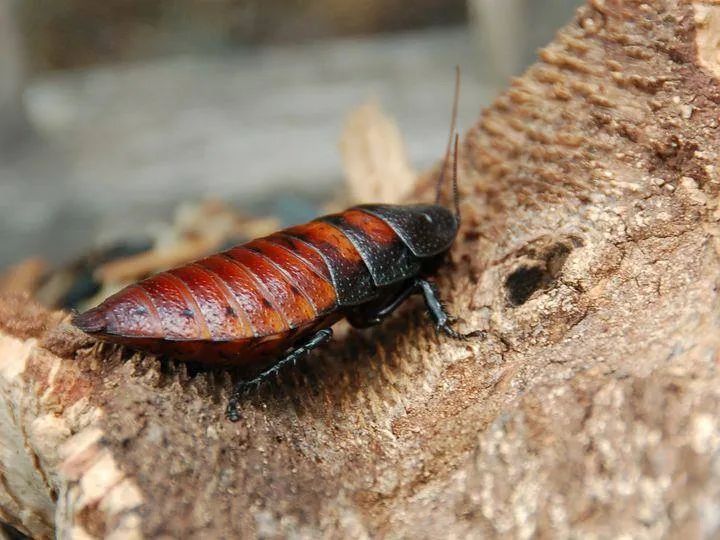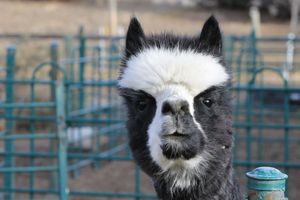
Madagascar Hissing Cockroaches
Gromphadorhina portentosa
Madagascar hissing cockroaches earn their name due to the hissing sound they make when they expel air through their breathing holes (spiracles). There are four different types of hissing calls a male combat hiss, two mating or courtship hisses, and an alarm hiss. When they alarm hiss, one cockroach will hiss, and then others will join in, and it will be loud enough to sound like a snake and scare off danger. They are the largest cockroach species in the world and can reach anywhere from two to four inches long. Their natural coloration is dark, from a mahogany brown color to black and have a very thick, hard, and waxy exoskeleton. They have small pads and hooks on their feet to help them climb on smooth surfaces like the side of their habitats. Males will have a pair of large bumps behind their head called prenatal humps; females will also have them, but they will appear much smaller. These cockroaches do not have wings unlike many other species we may be familiar with here in the United States.
Click HERE for a Cockroach Activity Sheet!
Our Current Residents
The Cockroach Colony, Genders Unknown- Birthdates Unknown
Our current colony contains cockroaches of all different sexes and ages and are constantly reproducing. They are currently the only self-sustaining population of animals at the Zoo. The cockroaches may hiss when they are startled, so we want to respect them and their habitat. They are located inside and can almost always be seen due to how many of them are in their habitat.
You can get to know the colony better and meet them in person through our programs scheduled through the Education Department!
Taxonomy
- Kingdom: Animalia
- Phylum: Arthropoda
- Class: Insecta
- Order: Blattodea
- Family: Blaberidae
- Genus: Gromphadorhina
- Species: Gromphadorhina portentosa
Animal Facts
Detritivores: mainly eat dead or decaying organic matter, or fallen leaves and fruit
Population Status: currently listed as Not Evaluated
Habitat: tropical lowland rainforest, dry leaf litter on forest floor
Activity: nocturnal- mostly active during the night

















































